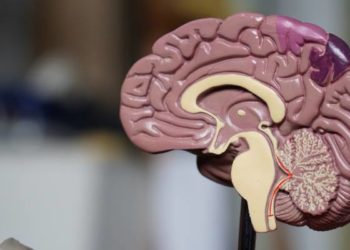Cerebral embolic protection devices not effective in surgical aortic valve repair
1. This randomized clinical trial showed that cerebral embolic protection devices did not significantly reduce the risk of CNS infarction among patients with calcific aortic stenosis undergoing SAVR.
2. However, fewer patients experienced delirium at postoperative day 7 in the cerebral embolic protection devices group compared to control.
Evidence Rating Level: 1 (Excellent)
Study Rundown: Aortic stenosis is common among elderly patients, and an increasing number of surgical aortic valve replacement (SAVR) and transcatheter aortic valve replacement (TAVR) procedures are being performed each year. Despite steady procedural improvements, central nervous system (CNS) infarctions remain a serious complication with significant detrimental impacts on survival, quality of life, and health care costs. As such, cerebral embolic protection devices were developed to reduce the incidence of CNS infarction post-SAVR. Two such devices are “intra-aortic filters” and “suction-based extracters”. This randomized clinical trial found that, despite capturing debris in most patients, cerebral embolic protection devices did not reduce the rates of clinical and radiographic signs of infarction, with nearly 69% of patients experiencing infarction. Interestingly though, the rates of delirium 7 days after aortic procedure were lower in those patients who received a cerebral protection device.
This study suggests that cerebral protection devices may be of little utility during aortic replacement procedures. However, there are a few limitations to the study. First, the significance of small and silent lesions on imaging cannot be established. Second, imaging was done on day 7 post-operation, but the optimal time frame to assess the effectiveness of such an operation is within the first few postoperative days – this may have led to an overestimation of the infarct burden through capturing infarctions not directly related to the intraoperative embolization (i.e., through atrial fibrillation). Third, the use of the NIHSS score has been validated as a measure of stroke severity but is not diagnostic of a stroke. Overall, this study reports important findings that cerebral embolic protection devices do not reduce incidences of CNS infarction 7 days post-operation, but the significant reduction in rates of delirium warrant further study in a larger study population.
Click to read the study, published in JAMA
Relevant Reading: Clinically silent cerebral ischemic events after cardiac surgery: their incidence, regional vascular occurrence, and procedural dependence.
In-Depth [randomized control study]: This randomized clinical trial studied 383 patients aged 60 years and older undergoing SAVR. Patients were randomized into the following groups: 1) intra-aortic filtration device with a heparin-coated mesh filter (n = 133), 2) suction-based extraction (n = 118), and 3) control (n = 132), where a standard aortic perfusion cannula was used. The primary endpoint was freedom from clinical or radiographic CNS infarction at 7 days after the procedure, supplemented by serial neurological assessment using the NIHSS. The secondary endpoint was mortality, clinical ischemic stroke, or acute kidney injury within 30 days after surgery. The study found that clinical and radiographic findings of infarction were not reduced in the two different treatment groups, with nearly 69% of patients experiencing clinical or radiographic stroke. Rates of freedom from CNS infarction was not different in the suction-based extraction group and the control group (32.0% vs 33.3% respectively; between-group difference, -1.3% [95%CI, -13.8% to 11.2%]) nor between the intra-aortic filtration group and the control group (25.6% vs 32.4% respectively; between-group difference, -6.9% [95%CI, -17.9% to 4.2%]). It was, however found that delirium rates declined in the cerebral embolic protection group compared to control. At postoperative day 7, 6.3% of patients in the suction-based extraction group experienced delirium, vs 15.3% of patients in the control group (between-group difference, -9.1%, 95%CI, -17.1% to -1.0%); and 8.1% of patients in the intra-aortic filtration group vs 15.6% of patients in the control group (between-group difference, -7.4%, 95%CI, -15.5% to 0.6%).
Image: PD
©2017 2 Minute Medicine, Inc. All rights reserved. No works may be reproduced without expressed written consent from 2 Minute Medicine, Inc. Inquire about licensing here. No article should be construed as medical advice and is not intended as such by the authors or by 2 Minute Medicine, Inc.







